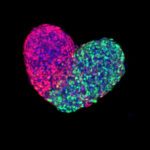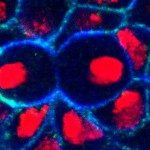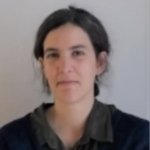Link to Pubmed [PMID] – 30650011
Link to DOI – 10.1091/mbc.E18-10-0644
Mol Biol Cell 2019 Mar; 30(7): 863-875
The mitotic spindle is an ensemble of microtubules responsible for the repartition of the chromosomal content between the two daughter cells during division. In metazoans, spindle assembly is a gradual process involving dynamic microtubules and recruitment of numerous associated proteins and motors. During mitosis, centrosomes organize and nucleate the majority of spindle microtubules. In contrast, oocytes lack canonical centrosomes but are still able to form bipolar spindles, starting from an initial ball that self-organizes in several hours. Interfering with early steps of meiotic spindle assembly can lead to erroneous chromosome segregation. Although not fully elucidated, this process is known to rely on antagonistic activities of plus end- and minus end-directed motors. We developed a model of early meiotic spindle assembly in mouse oocytes, including key factors such as microtubule dynamics and chromosome movement. We explored how the balance between plus end- and minus end-directed motors, as well as the influence of microtubule nucleation, impacts spindle morphology. In a refined model, we added spatial regulation of microtubule stability and minus-end clustering. We could reproduce the features of early stages of spindle assembly from 12 different experimental perturbations and predict eight additional perturbations. With its ability to characterize and predict chromosome individualization, this model can help deepen our understanding of spindle assembly.



